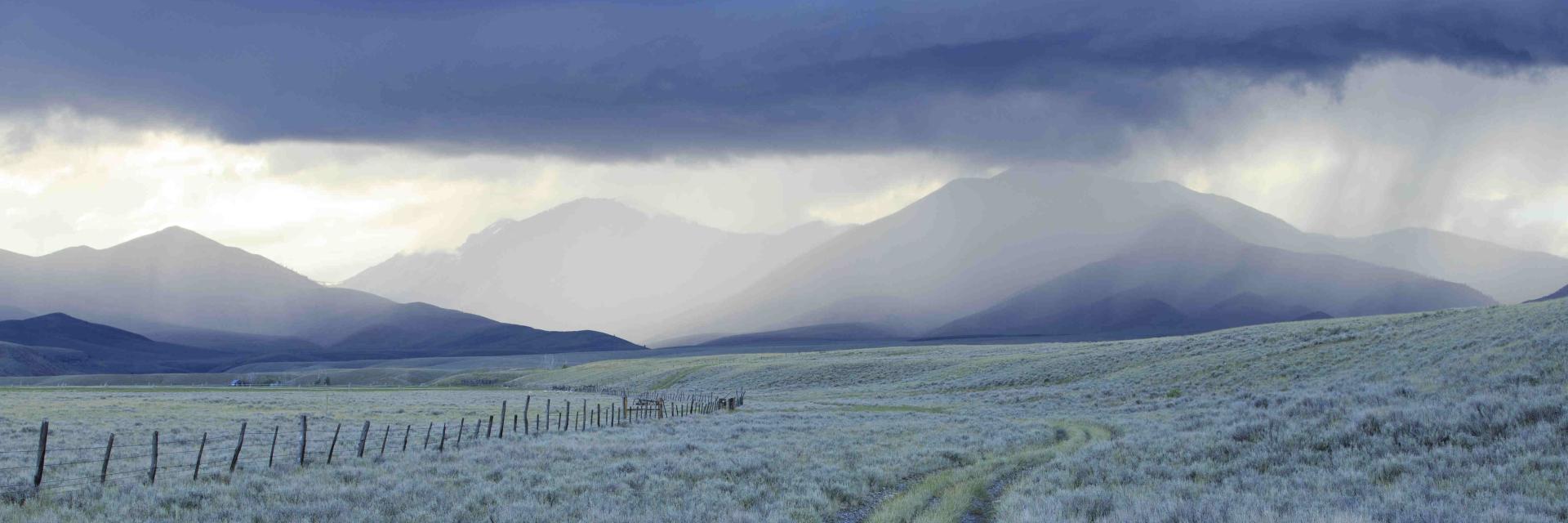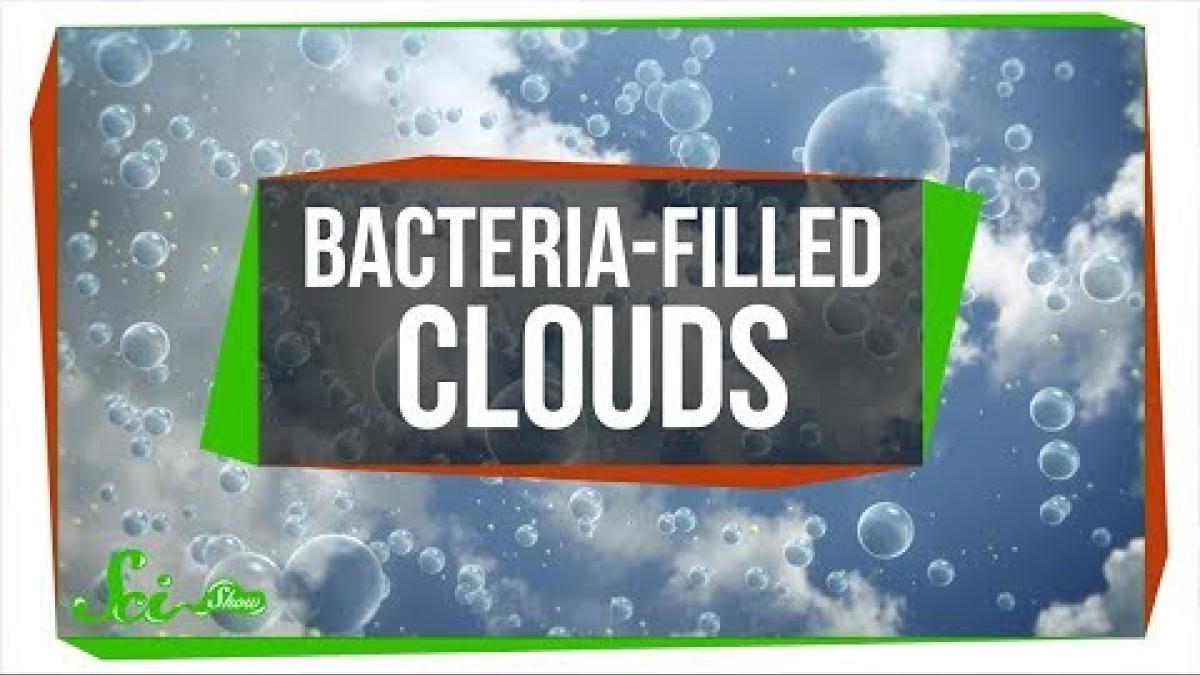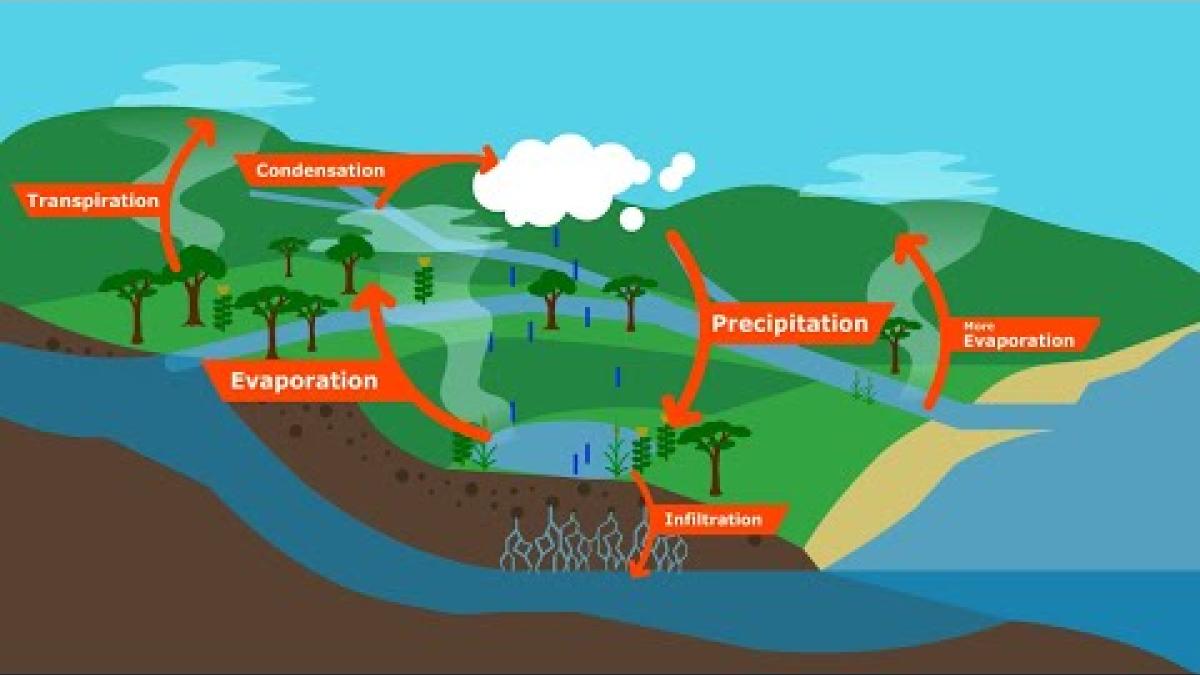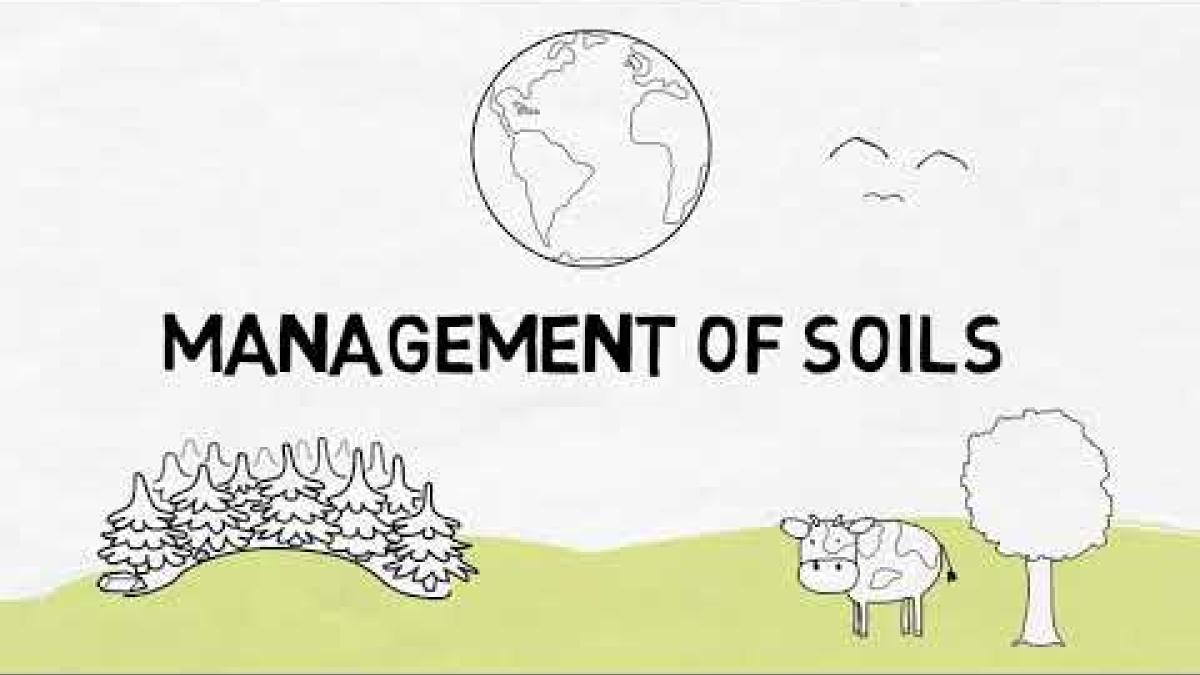
Rain showers over sagebrush-steppe at the foot of the Sawtooth Mountains in Clark County, Idaho.
Credit: Gerrit Vyn / Nature Picture LibraryRainmakers
Boost the small water cycle with regenerative land and water practices that restore soil health, expand plant diversity, replenish local watersheds, and cool local climates.
Rainmakers implement actions that boost the small water cycle, which recirculates moisture in a given area via evaporation and precipitation, increasing localized rainfall. It contrasts with the large water cycle, which draws water from oceans and moves it around the globe. A healthy small water cycle is essential to watersheds, which provide water to communities, agriculture, and wildlife. It can counter desertification. However, human activities have disrupted small water cycles in many places by reducing vegetation and disturbing soils. Culprits include industrial agriculture, deforestation, and urbanization. One of the keys to rainmaking is specific cloud-forming bacteria. Their production can be directly influenced by land management, including regenerative practices that restore degraded watersheds, diversify native vegetation, and improve soil health. Rainmakers implement localized solutions that are community-based and long-term.
Action Items
Individuals
Learn about what disrupts the small water cycle and why it is important to restore it. Research indicates that microbes, including bacteria, fungi, and algae, can be nuclei around which rain clouds form, as can dust. Microbes enable ice formation, causing them to become “rainmakers,” a process called bioprecipitation. As research in the 1970s in Kenya indicated, biologically active landscapes, such as a forest or an ecological farm, can generate cloud-forming microbes that become airborne, boosting local precipitation. The concentration of these rainmaking microorganisms increases with vegetation cover and healthy soils. Industrial agriculture, urbanization, and deforestation can interfere with the small water cycle in a given landscape. This can lead to extended droughts, depleted water tables, heavy flooding, erosion, and extreme heat.
- There is a strong link between deforestation and disturbances to local and regional weather patterns, including reduced rainfall. This is particularly true in tropical forests. Continued deforestation in the Congo basin could reduce local rainfall by 8 to 10 percent by the end of the century.
- Land degradation and soil erosion decrease water available to plants and trees, reducing the amount of bacteria available for rainmaking.
- Regenerative methods of managing the small water cycle exist and are being implemented by farmers, landowners, and communities. Decentralized water management in parts of Slovakia has placed water-cycle oversight into community hands at the level of individual watersheds with benefits for climate mitigation and ecosystem restoration.
- Regenerative land-management practices expand vegetation cover and enable the soil to retain moisture. This article explains how a Kansas farm used rotational grazing, no-till, and cover crops to increase localized rainfall and enhance their land’s ability to absorb and retain water.
Restore the small water cycle where you live. Small water cycle restoration and maintenance is, by its nature, a local solution. The scale of what you can do and how big an impact you can have depends on your circumstances.
- A healthy small water cycle starts with healthy soil and plants, both of which help maintain a healthy water cycle. Cloud-nucleating bacteria originate in biologically healthy landscapes, including median strips, home gardens, fields, and forests. Grow a garden where you live or participate in an urban farm (see Perennial Crops Nexus and Urban Farming Nexus).
- Learn about your local watershed. You can use this map to explore watersheds worldwide and this 10-step guide to how you can protect and restore your local watershed (see Degraded Land Restoration Nexus).
- Harvesting and reusing stormwater helps keep moisture within your local watershed. If you have a garden, use this guide on recycling rainwater and gray water for irrigation. Here is an article about rain gardens.
- Permaculture principles and practices are especially well suited for water conservation. Here is a guide to starting a permaculture garden at home. Water-management structures can be scaled to fit your property.
- Dryland water harvesting expert Brad Lancaster offers many ways to significantly reduce your water use at home.
- Covering paved areas and rooftops with vegetation helps to reduce stormwater runoff. TreePeople is one of many community groups dedicated to regreening urban areas. This article includes a guide on “urban rewilding” (see Rewilding Nexus).
- Share knowledge about the small water cycle with your family, friends, and community. This manual and this article provide some ideas on how to talk to people about the importance of natural water cycles.
- Engage in community-based water management in your local area. This podcast and these case studies provide inspiration for engaging your communities around local water management.
- Support farmers, ranchers, and food companies that practice regenerative agriculture with your food and household choices, particularly those in your local area (see Regenerative Agriculture Nexus, Agroforestry Nexus, Bamboo Nexus, and Localization Nexus).
Support organizations restoring the small water cycle. As awareness about the importance of small water cycles grows, so too do people and projects pioneering localized, regenerative solutions to restoring them.
- The Weather Makers are working to regreen the Sinai Peninsula. Find out more about them and consider supporting their project.
- JustDiggit partners with farmers in East and Central Africa to restore the small water cycle and to regreen desertified areas. You can directly support their work by sponsoring a bund.
- Commonland has built an online community of people and practitioners dedicated to restoration and regeneration. By joining their 4 Returns platform, you can learn from other community members, collaborate on projects, and keep up to date on the latest restoration ideas.
- Re-Alliance works to grow the influence of regenerative practices in response to disaster and displacement. Their members work with local communities to implement regenerative projects, including water harvesting and greywater recycling. Learn more about their work and how you can get involved as a volunteer.
- Ecosystem Restoration Camps is a global grassroots movement that enables everyone to actively take part in restoring degraded land. Explore their network of camps and apply to volunteer.
Groups
Farmers and other land managers
Restore and enhance the small water cycle through regenerative water and land management. By increasing the availability of cloud-forming bacteria, you can potentially increase the amount of water available for crops and animals. Restoring vegetation to degraded land can increase yields, enhance resilience to extreme weather, and improve the soil’s ability to retain moisture.
- Integrating regenerative water management into your operation allows you to retain moisture in the soil and vegetation. Water Stories provides training and resources on water cycle restoration and has an online community of practitioners, where you can find advice on best practices.
- Integrating soil health principles into your operation can increase soil fertility and water availability, making your land more resilient.
- Natural sequence farming is an inexpensive method for farmers to capture and hold water on their land. It uses large-scale earthworks that mimic natural water courses to control floods, reverse salinity, prevent erosion, and enhance soil health. Mulloon Creek Farm in Australia has increased productivity, improved water flow and quality, and boosted biodiversity on its land.
- Implementing regenerative practices (see Regenerative Agriculture Nexus, Agroforestry Nexus, and Silvopasture Nexus) can increase the availability of water on your land by enhancing soil porosity and reducing moisture loss while providing more organic matter for rainmaking bacteria to grow. Livestock farmers in the Chihuahua desert in Mexico have used regenerative grazing methods to increase localized rainfall, improve soil quality and infiltration, and enhance biodiversity. This has enabled them to increase their net income and expand the size of their operation.
- Restoring vegetation to degraded land, such as by planting cover crops and increasing tree cover (See Proforestation Nexus and Afforestation Nexus), can boost the small water cycle and mitigate the impacts of extreme heat and drought. Restoration of the Loess Plateau in China has replenished water tables and increased localized rainfall, providing water security for local communities and landowners.
- Connecting with other farmers and landowners involved in restoration through networks such as Restor provides opportunities to share best practices and learn from others. The Savory Global Network enables farmers, ranchers, and pastoralists to connect with one another and share resources on implementing Holistic Resource Management.
Indigenous Communities
Restore and enhance the small water cycle through regenerative water and land management. Secure land tenure rights for local and Indigenous communities is critical in ensuring effective water management and regenerative land management as a whole.
- Traditional and Indigenous water-management approaches, largely ignored by the current water paradigm, can be harnessed to provide inherently localized solutions.
- In Malaysia, the state of Sabah legally recognizes the tagal system, a traditional community water-management practice, while in Ethiopia, the Konso and Borana communities effectively manage water according to traditional, community-based principles.
- Water harvesting methods such as johads—crescent-shaped dams made of earth and rocks—significantly prevent water runoff and allow moisture to seep into the groundwater. Rajendra Singh has been at the forefront of reviving this ancient technique in rural parts of India.
- Traditional water-retaining techniques vary from place to place and include swales, weirs, and zai pits. In Tanzania and Kenya, bunds—semicircular earth pits—are being used to capture rainwater and regreen degraded landscapes.
Researchers
Contribute to the body of research on the atmospheric microbiome and the role of water cycles in the climate. Understanding the presence and impact of microorganisms in the atmosphere is growing, but significant gaps remain. Solutions that harness bioprecipitation to generate rainfall are promising but complex, calling for a nuanced and localized approach to implementation.
- Overall, understanding of the presence and role of microorganisms in the atmosphere is still being unraveled, and further study is needed.
- Because certain bacteria that facilitate bioprecipitation also create frost, more research on how to mitigate these consequences is required. One of the most effective “rainmaking” bacteria, Pseudomonas syringae, is thought to cause losses of up to $1 billion annually in the United States.
- A better understanding of the factors that influence growth rates of ice-nucleating active bacteria (INAs) is critical. They don’t grow uniformly and are highly dependent on factors such as temperature, precipitation, and plant species.
- More research is needed to better understand the impact of land-cover change, particularly tree restoration, on the water cycle. Restoring forested areas can enhance water availability significantly in some places, while actually reducing water overall in the catchment area in other places.
- The French National Institute for Agricultural Research has developed a series of rainfall maps to encourage research on bioprecipitation and how it can be harnessed to increase localized rainfall.
Companies
Invest in NGOs and communities restoring the small water cycle. The consequences of small water cycle disruption all have negative impacts on business. Regenerative approaches to restoring the small water cycle are largely being implemented by NGOs and community-based organizations at relatively small and specialized scales. They need long-term financial support to ease the costs of scaling up these solutions. By financing these early-stage pioneers, you can expect returns on your investment. Here are some examples of how companies and investors can support small water cycle restoration:
- Shares and bonds. The Weather Makers encourage investors to buy a share in their company, to enable their approaches to get to market more quickly. The Flow Partnership enables businesses, investors, and communities to fund water cycle restoration through the purchase of River and Landscape Bonds.
- Business partnerships. NGOs such as WeForest partner with businesses to support water cycle restoration projects. This helps companies while directly supporting regenerative water and land management in local communities.
- Impact investment. Rewilding Europe offers businesses and investors a number of options for funding projects that directly contribute to water cycle restoration. These include participating in a funding facility that provides loans to businesses implementing rewilding and offers access to a market of commercially viable, nature-based carbon credits.
- Philanthropic funding. Restor connects funders with restoration opportunities worldwide, including those focused on water cycle restoration. Explore their open-source database of projects seeking philanthropic support.
Governance
Support policies that incentivize regenerative water and land management that could aid bioprecipitation. Current water policy largely ignores the role of the small water cycle and views trees and other vegetation as consumers of moisture rather than as critical regulators of both water and local climates. Decision-makers should go beyond viewing vegetation and forests purely for their carbon sequestration potential and value their critical role in hydrological and weather cycles.
- Develop regenerative water-management plans at all levels of government. Water Holistic supports governments at local, regional, and national levels in the creation and management of water restoration programs. In Slovakia, the Košice regional government recently adopted a watershed- and land-restoration program based on regenerative principles.
- Finance land and small water cycle restoration. Direct support, particularly for community-based water management and land restoration, has multiple crosscutting benefits in terms of ecosystem health and climate mitigation, as well as for local communities. Within the framework of the UN Decade on Ecosystem Restoration, policymakers should provide ample financing and support for organizations and communities implementing restoration on the ground.
- Integrate vegetation in city and urban planning. Expanding “green” and wild spaces in parks, roadsides, and unused spaces and planting gardens and shrubs on rooftops helps to restore the small water cycle in urban areas. They also help to mitigate other challenges that cities face, including urban heat islands, air quality, and the well-being of its residents.
- Coordinate policy at regional, national, and international levels. The impacts of water-cycle restoration reverberate beyond individual catchment areas and watersheds. It calls for concerted collaboration and coordination.
Key Players
Organizations
People and Water (Slovakia) works to prevent the construction of multiple unnecessary water dams, revitalize regions, and hydrate urban, forest, and agricultural land.
The Weather Makers (The Netherlands) promotes impact-driven ecosystem planning, engineering, and management strategies to restore water cycles.
Tarun Bharat Sangh (India) works towards climate change mitigation and adaptation by promoting water conservation, sustainable agriculture, and rural development in the arid and semi-arid regions of India.
Tamera (Portugal) works on building the Water Retention Landscape as a far-reaching holistic and regenerative approach for ecosystem restoration.
The Flow Partnership (UK) works with partners to rejuvenate landscapes and counter the increasing threat of floods, droughts, soil erosion, and habitat loss at their source.
Restor (Switzerland) provides data on biodiversity, carbon, water, and land use by importing or drawing your site.
Commonland (Netherlands) brings people together to restore landscapes and regenerate the Earth.
Ecosystem Restoration Camps (Global) restores ecological functionality, builds research, training, and innovation centers for ecological restoration, engages people in an inquiry into ecological restoration, and trains people in how to restore degraded lands in perpetuity.
UN Convention to Combat Desertification (UNCCD) (Global) promotes practices that avoid, reduce, and reverse land degradation and are the driving force behind Sustainable Development Goal 15 and Land Degradation Neutrality.
UN Decade on Ecosystem Restoration (Global) works to stop and reverse the destruction and degradation of billions of hectares of ecosystems.
The International Fund for Agricultural Development (IFAD) (Global) envisions vibrant, inclusive, and sustainable rural communities where people live free from poverty and hunger.
World Meteorological Organization (WMO) provides the framework for international cooperation to advance meteorological, climatological, hydrological, and related environmental services.
United Nations Environment Programme (UNEP) (Global) is the leading global authority on the environment.
Food and Agriculture Organization of the United Nations (FAO) is a specialized agency of the United Nations that leads international efforts to defeat hunger.
Learn
Watch
Water Is Life - The Water Retention Landscape of Tamera by Tamera - Healing Biotope 1 (13 min.)
How to Restore Our Water Cycle: The Water Guidelines by Climate Water Project (16 mins.)
Lessons of the Loess Plateau by EcopointAsia TV (52 mins.)
Permaculture Keyline Water Systems: Don Tipping @ Seven Seeds Farm by Andrew Millison (10 mins.)
Producing Water by Ecosystems - Tichyu Potok by Michal Kravcik (2 mins.)
Integrated Water Harvesting Earthworks, Restoring Ecosystems with Permaculture Design by Permaculture Institute of North America (19 mins.)
Greening China’s Loess Plateau - John D Liu by Patrick Worms (2 mins.)
Biological Rainfall Triggers by Cindy Morris (13 mins.)
Walter Jehne -- Understanding the Water Cycle: And the potential for rapid global cooling by Bionutrient Food Association (91 mins.)
Read
"Water: The Missing Link to Solve Climate Change: A Global Action Plan" by Martin Winiecki / Tamera
"Radical Ideas: Bacteria Control the Weather" by Tom Ireland / BBS Science Focus
Every Drop Counts - How a Restoration Initiative in Slovakia Brought Back Water, Revived Soils by the UN Decade on Ecosystem Restoration
"The New Water Paradigm: Global Climate and Ecosystem Restoration" by Bernd Walter Mueller / Tamera
"Seeding the Skies with Rainmaking Bacteria" by Futures Centre
"The Long Strange Journey of Earth’s Traveling Microbes" by Fred Pearce / Yale Environment 360
Water in Plain Sight: Hope for a Thirsty World by Judith D. Schwartz / St. Martin's Press
Listen
Regreening the Sinai: Interview with Ties Van der Hoeven by Climate Water Project (78 mins.)
Communities Can Protect Themselves Against Floods and Droughts: Minni Jain Interview by Climate Water Project (77 mins.)
Bioprecipitation by BBC Discovery (27 mins.)
Rain and Shine: Small Water Cycles by Kori Stanton and Calla Rose Ostrander / KVNF (3 mins.)
Share this page




